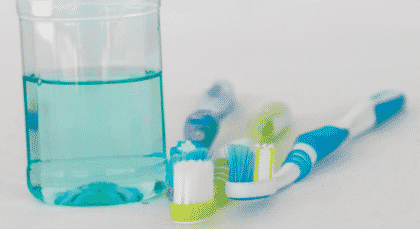Jobs In the Dental Field Don’t Come Without Dangers
After making the decision to work in the dental field for your future career, one of the last things on your mind may be the hazards dental professionals face on a daily basis while performing their job. Mostly the cost of supplies, keeping your grades up, ensuring you have enough time to study and finish your homework on time are the things on dental student’s minds. However, just like any career, there are certain things they will end up facing during and after dental school. By not only acknowledging and learning about the hazards they might face, but also by ensuring they know how to handle them should they occur, those entering the dental professional world will be able to take good care of themselves and their staff.
What Type of Dental Professionals Are There?
Other than the receptionists at the front desk that handle the day to day scheduling, insurance issues and billing, the rest of those working in a dental office are considered clinical staff members. These are the specialists who went to school to learn how to treat and take care of patients.
Dentist/Dental Specialist
A dentist is trained to not only diagnose ailments and diseases of your mouth, gums and teeth, but also treat them through restorative work and by prescribing medications if needed. They can also take additional courses to become specialized in other areas, such as:
- oral surgery (extractions, implants)
- endodontics (root canals)
- orthodontics (braces)
- prosthodontics (bridges)
- sedation techniques
Dental Hygienist
Those interested in becoming a dental hygienist must complete schooling to become licensed. After that has been achieved, they work with each individual patient to provide professional preventative care for their gums and teeth. They expertly remove stain and buildup from your teeth to prevent bacteria festering in between your teeth and under your gums which causes decay and even infection. They take x-rays for the dentist to review, and measure the depth of the pockets of your gums around each tooth to determine if gum disease is present. If it is, the hygienist is the staff member who treats the disease through scaling and root planing. They can also perform sealants and bleaching if needed.
Dental Assistant
Many procedures require too much work or need an extra pair of hands to complete, which is where the dental assistant comes in. After schooling, their main focus is to ensure that each dental procedure is completed with ease for the dentist. They do this by setting up each operatory for each individual procedure that day in advance. During the procedures, they monitor the patient’s need for suction, hand the dentist any tools he or she requires, retract the tongue and/or the cheek of the patient if it is in the way, mix materials needed, and can perform a few procedures the dentist isn’t needed for, such as bleaching or buffing out rough spots on dentures. They sterilize each operatory after every use and then set up for the next patient’s procedure.
Types of Job Hazards Dental Professionals Face
Exposure to Infectious Diseases
Every precaution is taken to prevent transmission of diseases in any health care facility. Unfortunately, a needle stick or a poke from a used instrument can happen. In this situation, the dental professional is required to go in for testing right away, but if the patient the instrument was just used on has a communicable disease, it is possible that it can be passed on to the staff member.
Eye Injuries
It is common for particles to be flung out of your mouth during a dental procedure or a cleaning, which is why all clinical staff must wear protective goggles during each appointment. However, as these things can be minuscule, it is possible for something to fly into the dental professional’s eye. This can also occur in the dental lab, where the assistant is making custom fitted trays from stone molds, or even while using cleaning solutions while sterilizing rooms.
Stress and Psychological Strain
Many people have a fear of the dentist. This phobia leads them to not want to be in the dental office (or can make them avoid it altogether). It is a very common thing to experience, but nowadays, dental treatment is nowhere near as invasive as it was years ago. There are plenty of people who, as children, had a bad experience with a not-so-gentle dentist. Today, however, procedures can be performed painlessly. Unfortunately, phobic patients can be extremely on edge, saying hurtful things, or even having temper tantrums in the dental office. Dental professionals understand this phobia as they see it almost daily, but it can definitely make a dentist or hygienist feel stressed or sad.
Injuries to Extremities Due to Repetitive Motions
To perform most dental procedures, your dentist and hygienist must make very small, detailed movements. It may not seem like a big deal, but that dentist performs the same small, detailed procedures over and over throughout each day, which can cause things such as tendinitis. They also are sitting in their chair to be slightly above you when you are laying back in their chair, meaning they are constantly looking down, and sometimes hunched over, which can cause back and neck issues.
All Jobs Have Hazards of Some Kind
Even though the above information may make it seem scary, no job comes without hazards. The staff of a dental office truly enjoy their jobs, and went to school for the position they are in to pursue their passion for helping you treat and maintain a good, healthy mouth. Don’t forget, an infection in your mouth can spread to the rest of your body and cause complications beyond belief. When you come in for your appointments, your dental team is capable and ready to ensure your health together as a team.




